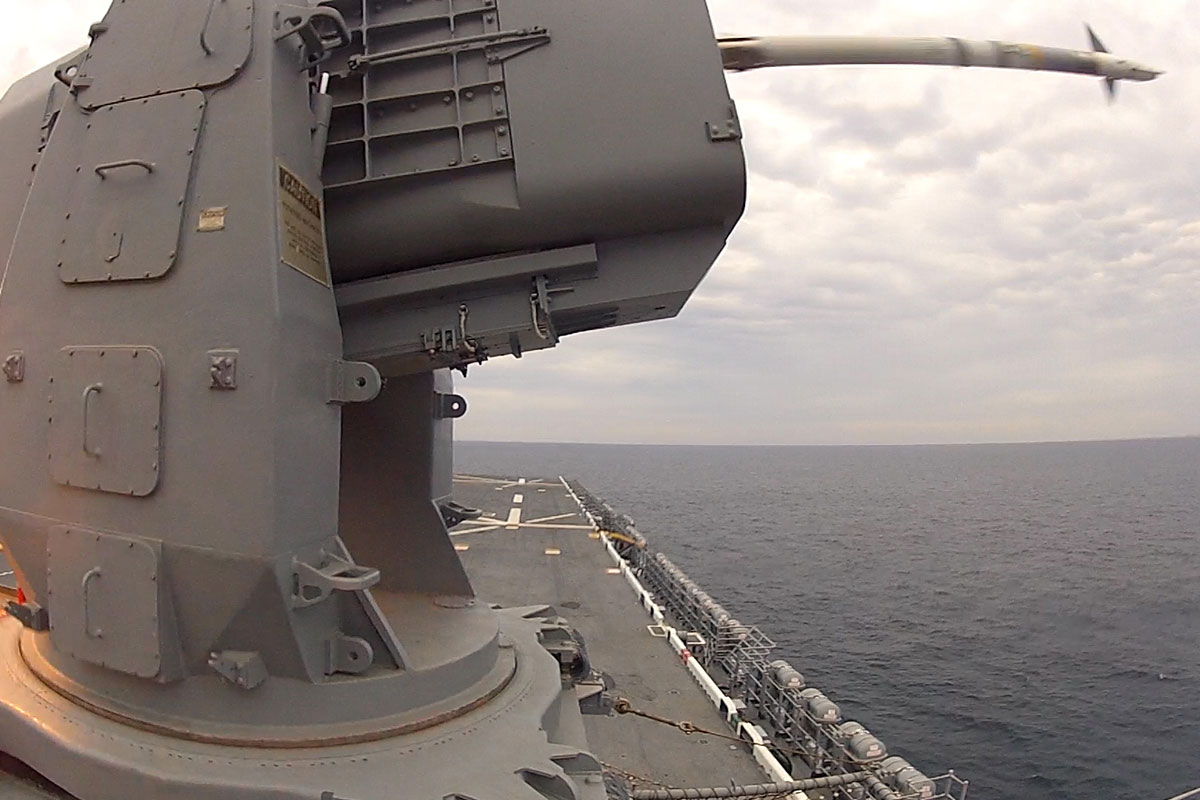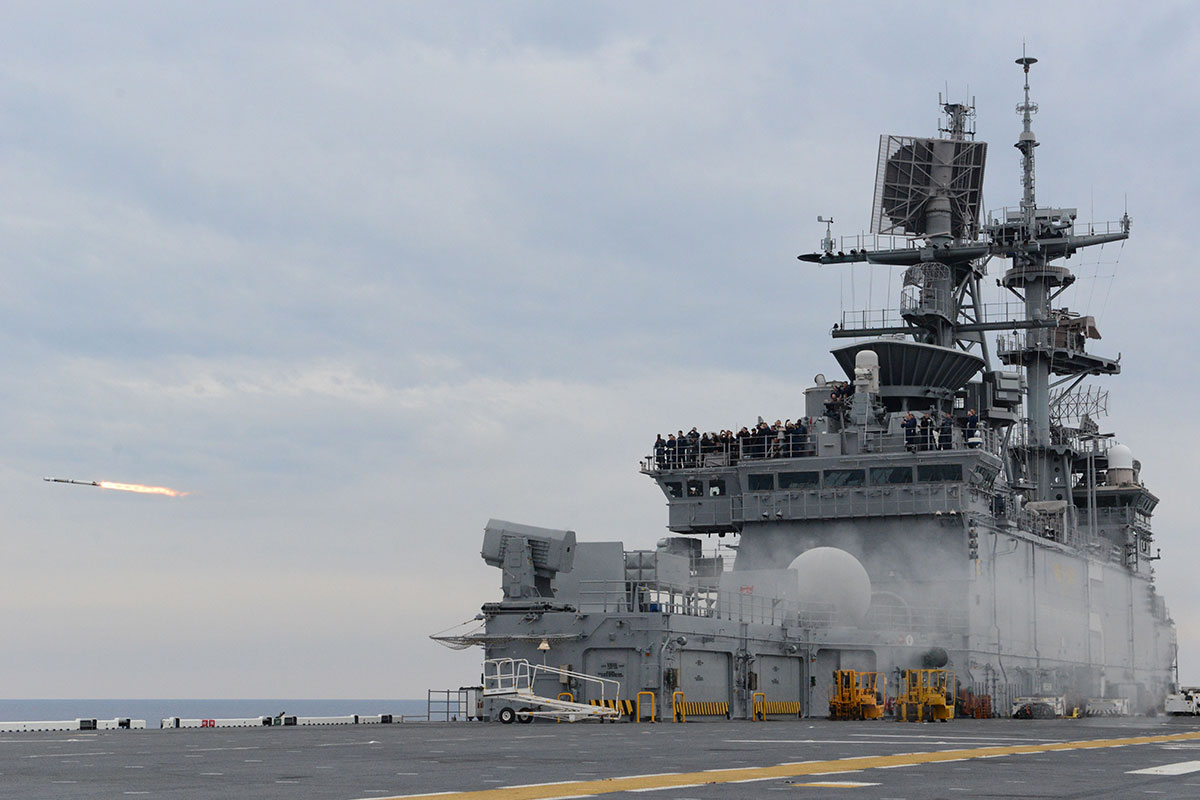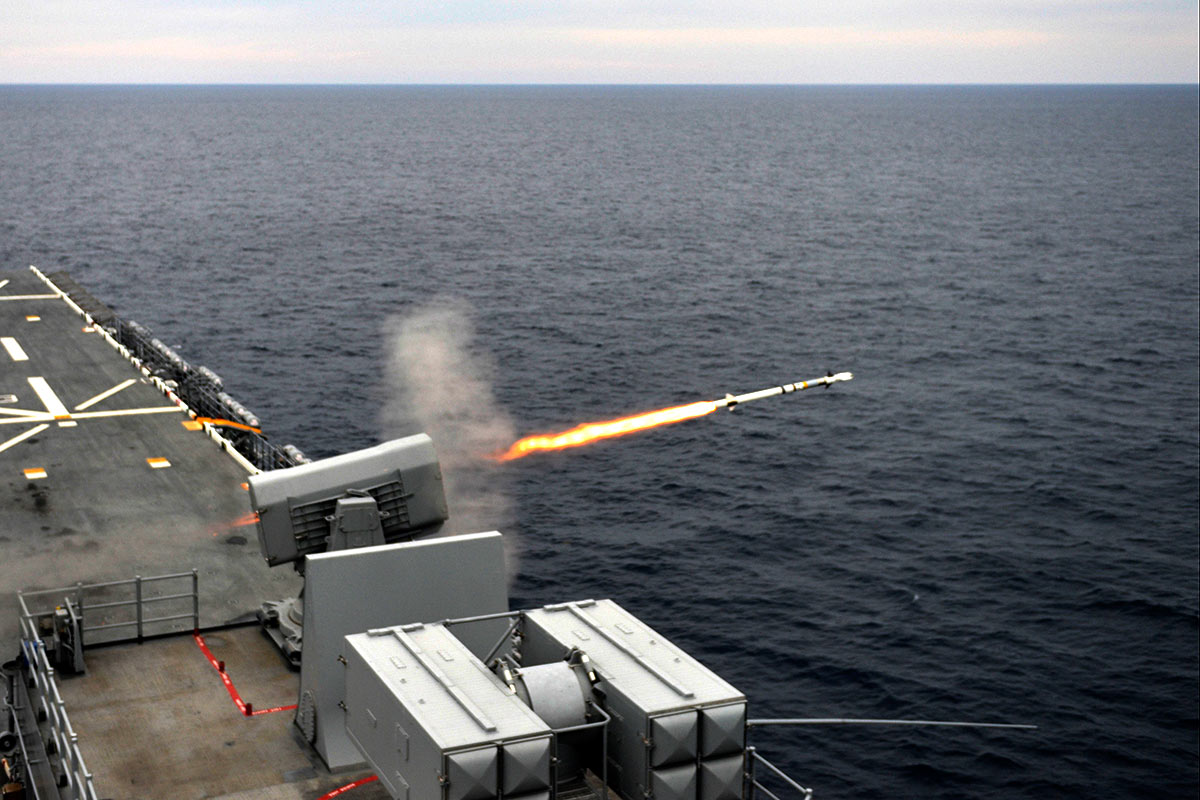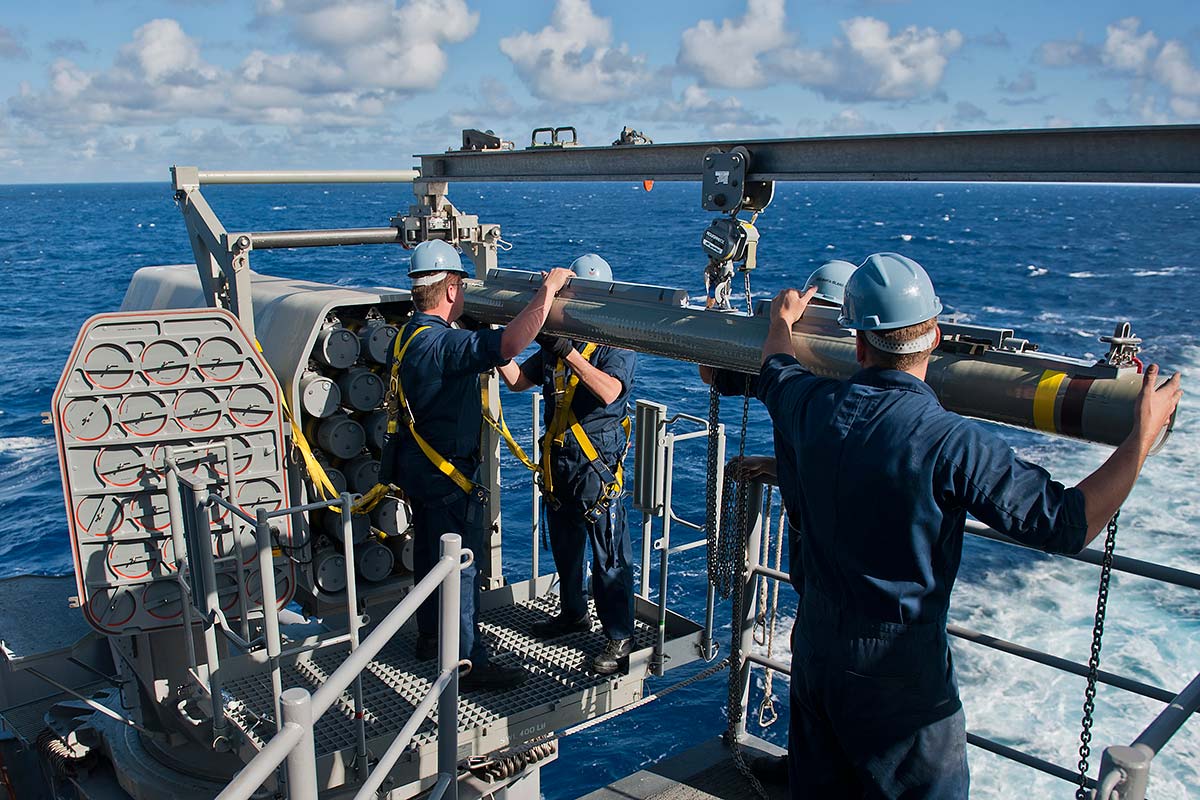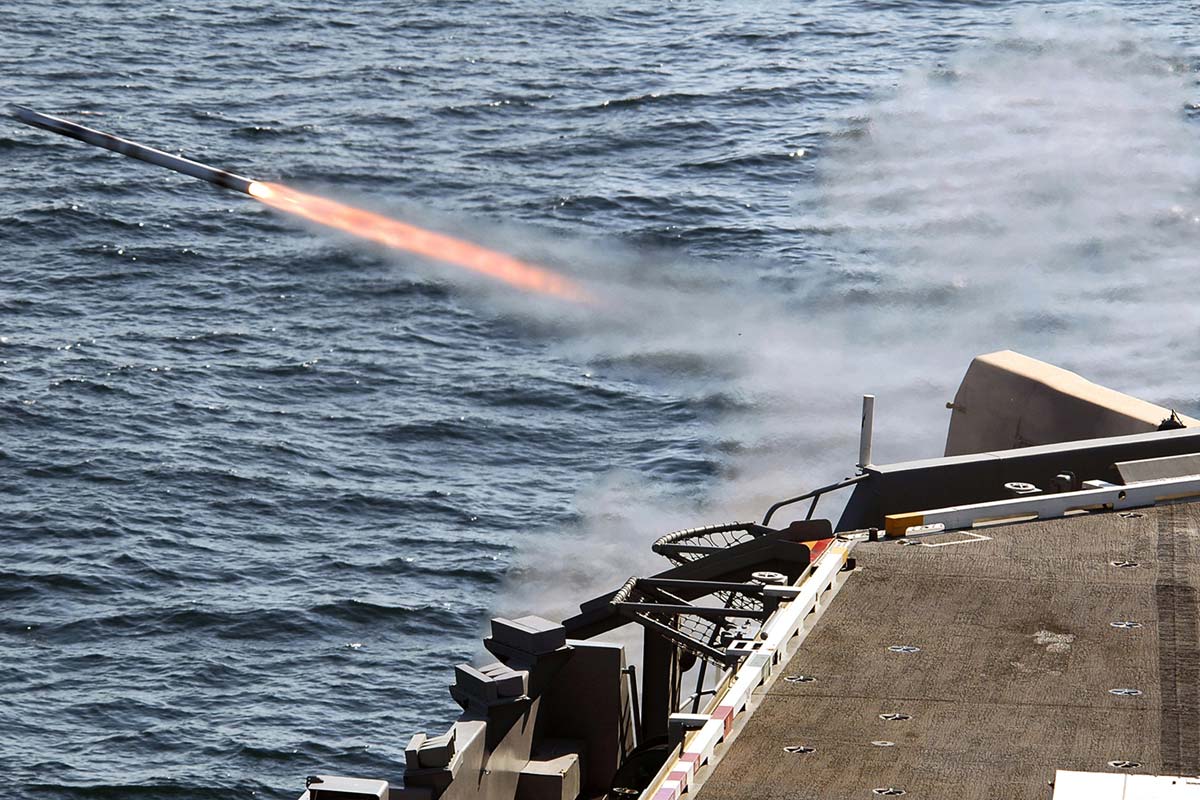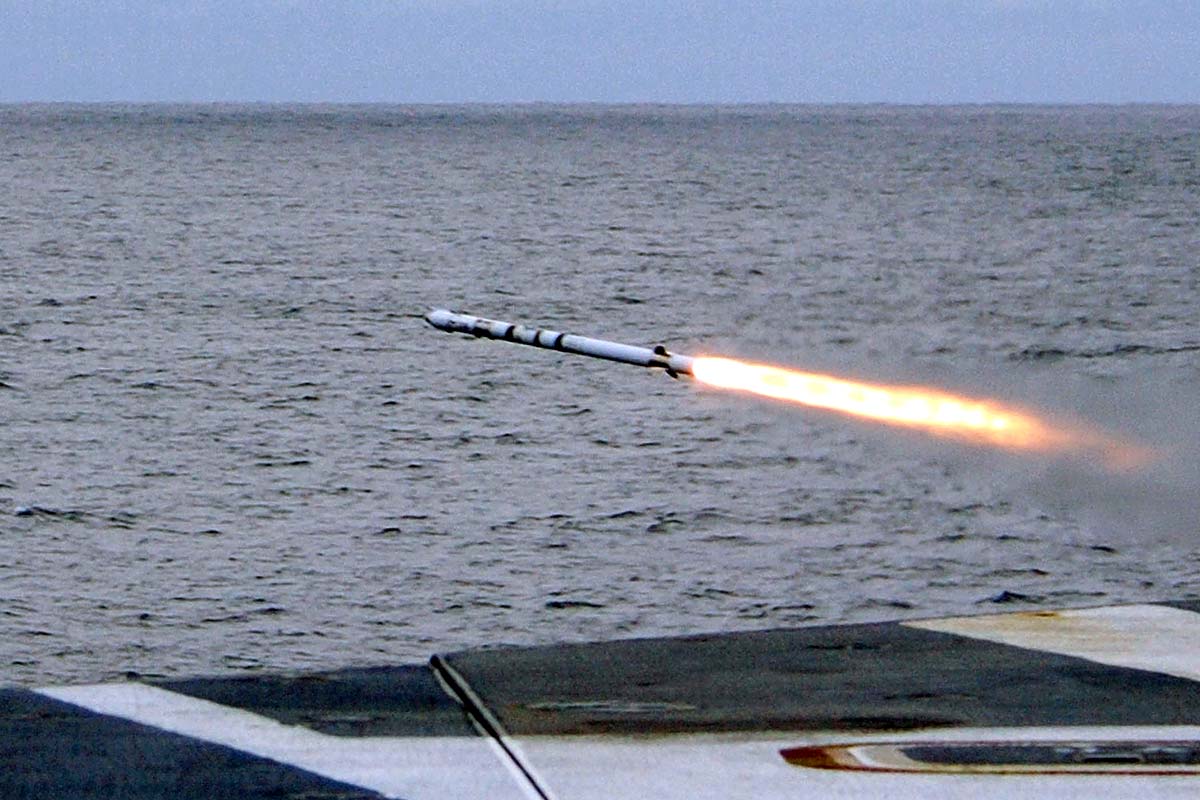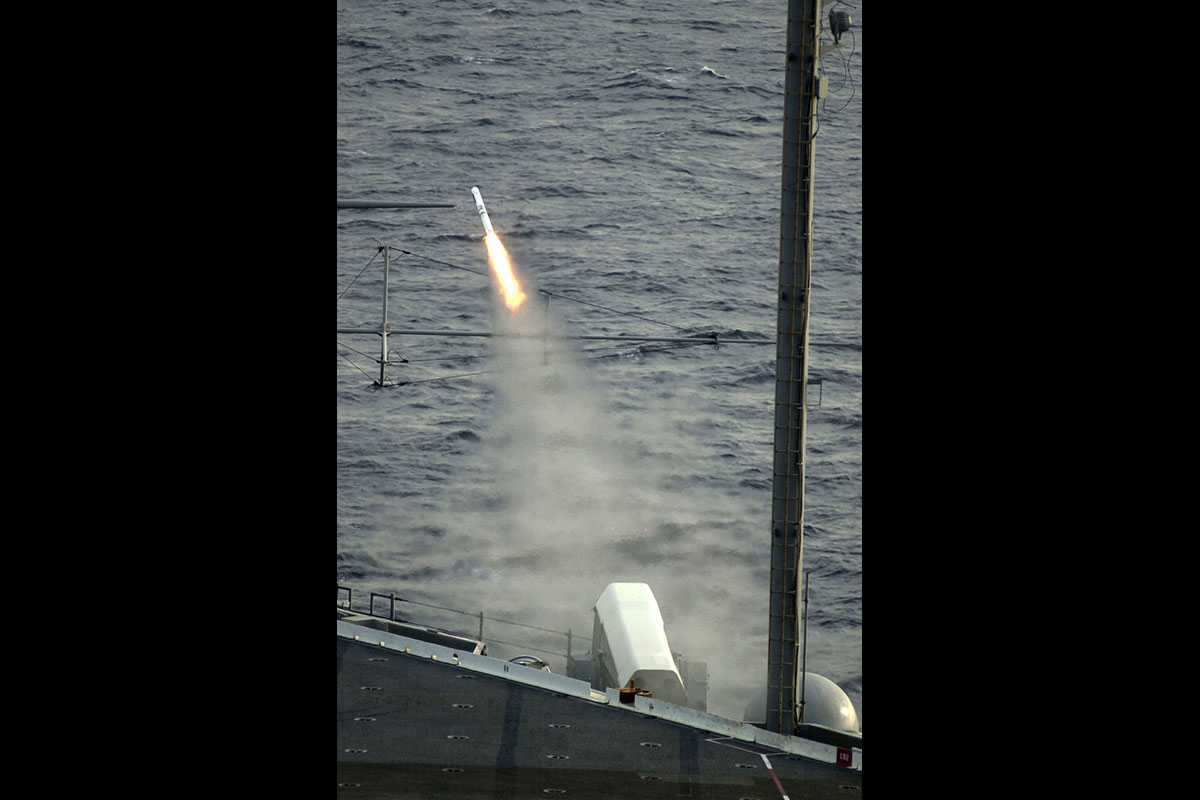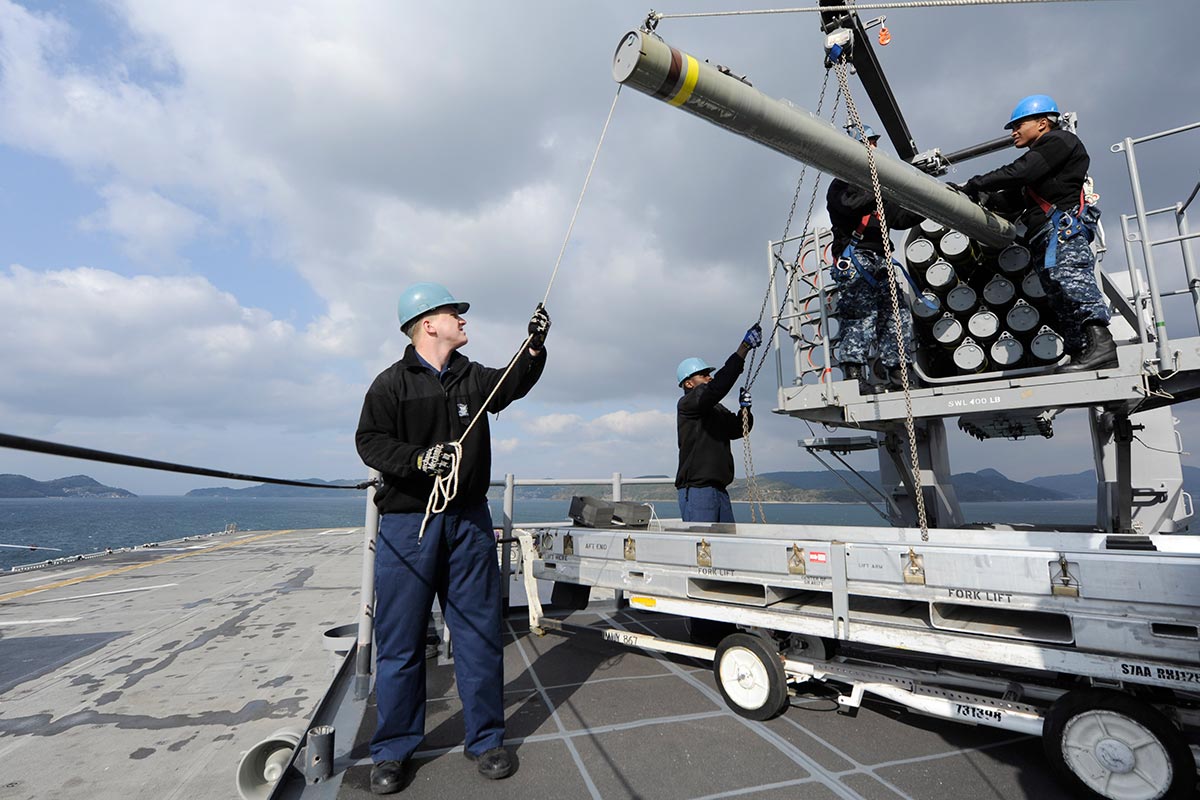Contractor: Raytheon
Service: USN
Propulsion: Solid-propellant rocket
Length: 9.3 ft
Diameter: 5 in
Wingspan: 17.5 in
Weight: 164 lbs.
Speed: Supersonic
Platforms: Amphibious Assault Ships (LHA/LHD); Landing Platform Dock Ships (LPD); Carriers (CVN)
Dock Landing Ships (LSD)
Littoral Combat Ship (LCS)
Warhead: 7.9 lbs.
The RIM-116 Rolling Airframe Missile (RAM) is a lightweight, quick-reaction, fire-and-forget missile designed to destroy anti-ship cruise missiles and asymmetric air and surface threats. The RIM-116 RAM was developed as a cooperative program between the U.S. and German governments, and continues to be cooperatively produced and supported. Currently there are two RIM-116 configurations: Block 1A (RIM-116B) and Block 2 (RIM-116C). Block 1A is nearing completion of full rate production. The RAM Block 2 configuration is currently in low rate initial production and undergoing Developmental and Operational Testing.
The RIM-116 RAM is designed as a high-firepower, low-cost, self-defense system against anti-ship cruise missiles and other asymmetric threats. The original Block 0 design was based upon the infra-red seeker of the Stinger missile, and the warhead, rocket motor and fuse from the Sidewinder missile. The Block 0 configuration uses Radio Frequency (RF) for midcourse guidance and transitions to Infrared (IR) guidance for terminal engagement. There is no shipboard support required (i.e., no illuminators) after missile launch. The Block 1A incorporates the added capability of autonomous IR-all-the-way guidance, thus countering advanced anti-ship cruise missiles that do not employ onboard radar seekers.
The Block 2 provides kinematic and guidance improvements to the missile for countering maneuvering threats and regaining battlespace. It features a Control Section upgrade (4 canards vs. current 2), a Propulsion Section upgrade (a larger, composite case rocket motor) and an Evolved Radio Frequency (ERF) receiver. RAM Block 2 Initial Operating Capability (IOC) is planned to occur in 2014.
